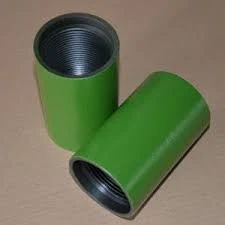- Afrikaans
- Albanian
- Amharic
- Arabic
- Armenian
- Azerbaijani
- Basque
- Belarusian
- Bengali
- Bosnian
- Bulgarian
- Catalan
- Cebuano
- Corsican
- Croatian
- Czech
- Danish
- Dutch
- English
- Esperanto
- Estonian
- Finnish
- French
- Frisian
- Galician
- Georgian
- German
- Greek
- Gujarati
- Haitian Creole
- hausa
- hawaiian
- Hebrew
- Hindi
- Miao
- Hungarian
- Icelandic
- igbo
- Indonesian
- irish
- Italian
- Japanese
- Javanese
- Kannada
- kazakh
- Khmer
- Rwandese
- Korean
- Kurdish
- Kyrgyz
- Lao
- Latin
- Latvian
- Lithuanian
- Luxembourgish
- Macedonian
- Malgashi
- Malay
- Malayalam
- Maltese
- Maori
- Marathi
- Mongolian
- Myanmar
- Nepali
- Norwegian
- Norwegian
- Occitan
- Pashto
- Persian
- Polish
- Portuguese
- Punjabi
- Romanian
- Russian
- Samoan
- Scottish Gaelic
- Serbian
- Sesotho
- Shona
- Sindhi
- Sinhala
- Slovak
- Slovenian
- Somali
- Spanish
- Sundanese
- Swahili
- Swedish
- Tagalog
- Tajik
- Tamil
- Tatar
- Telugu
- Thai
- Turkish
- Turkmen
- Ukrainian
- Urdu
- Uighur
- Uzbek
- Vietnamese
- Welsh
- Bantu
- Yiddish
- Yoruba
- Zulu
steel couplings for pipe
Steel Couplings for Pipe A Comprehensive Overview
In industrial and construction applications, pipe systems are integral for transporting fluids, gases, and other materials. One of the critical components that ensure the integrity and reliability of these systems is the coupling. Steel couplings, specifically, have become a popular choice due to their durability, strength, and versatility. This article discusses the various aspects of steel couplings for pipes, including their types, applications, benefits, and installation considerations.
What are Steel Couplings?
Steel couplings are mechanical devices used to join two pieces of pipe together. They come in various shapes and sizes, designed to accommodate different pipe materials and diameters. Generally, these couplings are made from carbon steel, stainless steel, or alloy steel, which contribute to their strength and resistance to various environmental factors.
Types of Steel Couplings
There are several types of steel couplings commonly used in piping systems
1. Threaded Couplings These couplings have internal threads that allow pipes to be connected by screwing them together. They are commonly used in applications where disassembly is required.
2. Welded Couplings As the name suggests, these couplings are welded to the pipe ends, creating a permanent connection. They are ideal for high-pressure applications and where leakage prevention is crucial.
3. Flanged Couplings These feature flanges that allow for bolted connections. Flanged couplings are versatile and can be easily disassembled for maintenance, making them suitable for larger pipe systems.
4. Compression Couplings These couplings use a compression mechanism to join pipes. They can connect pipes of various materials and are easier to install compared to welded or threaded types.
5. Expansion Couplings Designed to accommodate thermal expansion in piping systems, these couplings prevent stress and damage caused by temperature fluctuations.
Applications of Steel Couplings
Steel couplings are used across a wide spectrum of industries, including
1. Oil and Gas In the oil and gas sector, steel couplings are critical for transporting oil, natural gas, and other chemicals safely and efficiently.
steel couplings for pipe

3. Construction In construction, steel couplings are often used for joining structural pipes, fire protection pipes, and HVAC systems.
4. Manufacturing Many manufacturing processes rely on piping systems for the transportation of materials, and steel couplings ensure those systems are secure and efficient.
Benefits of Steel Couplings
The advantages of using steel couplings are manifold
- High Strength and Durability Steel couplings can withstand high pressure and extreme temperatures, making them ideal for demanding applications.
- Chemical Resistance Stainless steel couplings, in particular, offer excellent resistance to corrosive substances, ensuring a long service life.
- Versatility With various types available, steel couplings can be used in diverse applications, accommodating different piping materials and sizes.
- Easy Maintenance Flanged and threaded couplings can be easily disassembled for repair or replacement, minimizing downtime in operations.
Installation Considerations
While installing steel couplings, several factors must be considered
- Compatibility Ensure that the coupling is compatible with the material and diameter of the pipes being joined.
- Environment Consider the environmental conditions, such as temperature, pressure, and exposure to chemicals, which can affect the choice of coupling.
- Standards Follow relevant industry standards and regulations to ensure safety and compliance.
In conclusion, steel couplings play a vital role in ensuring the reliability and efficiency of piping systems across various industries. Their strength, durability, and versatility make them a preferred choice for many applications. Proper selection and installation of steel couplings not only enhance the performance of pipe systems but also contribute to their longevity, reducing maintenance costs and improving overall safety. As industries continue to evolve, the demand for high-quality steel couplings will remain a critical component in infrastructure development and industrial processes.
-
Tubing Pup Joints: Essential Components for Oil and Gas OperationsNewsJul.10,2025
-
Pup Joints: Essential Components for Reliable Drilling OperationsNewsJul.10,2025
-
Pipe Couplings: Connecting Your World EfficientlyNewsJul.10,2025
-
Mastering Oilfield Operations with Quality Tubing and CasingNewsJul.10,2025
-
High-Quality Casing Couplings for Every NeedNewsJul.10,2025
-
Boost Your Drilling Efficiency with Premium Crossover Tools & Seating NipplesNewsJul.10,2025







